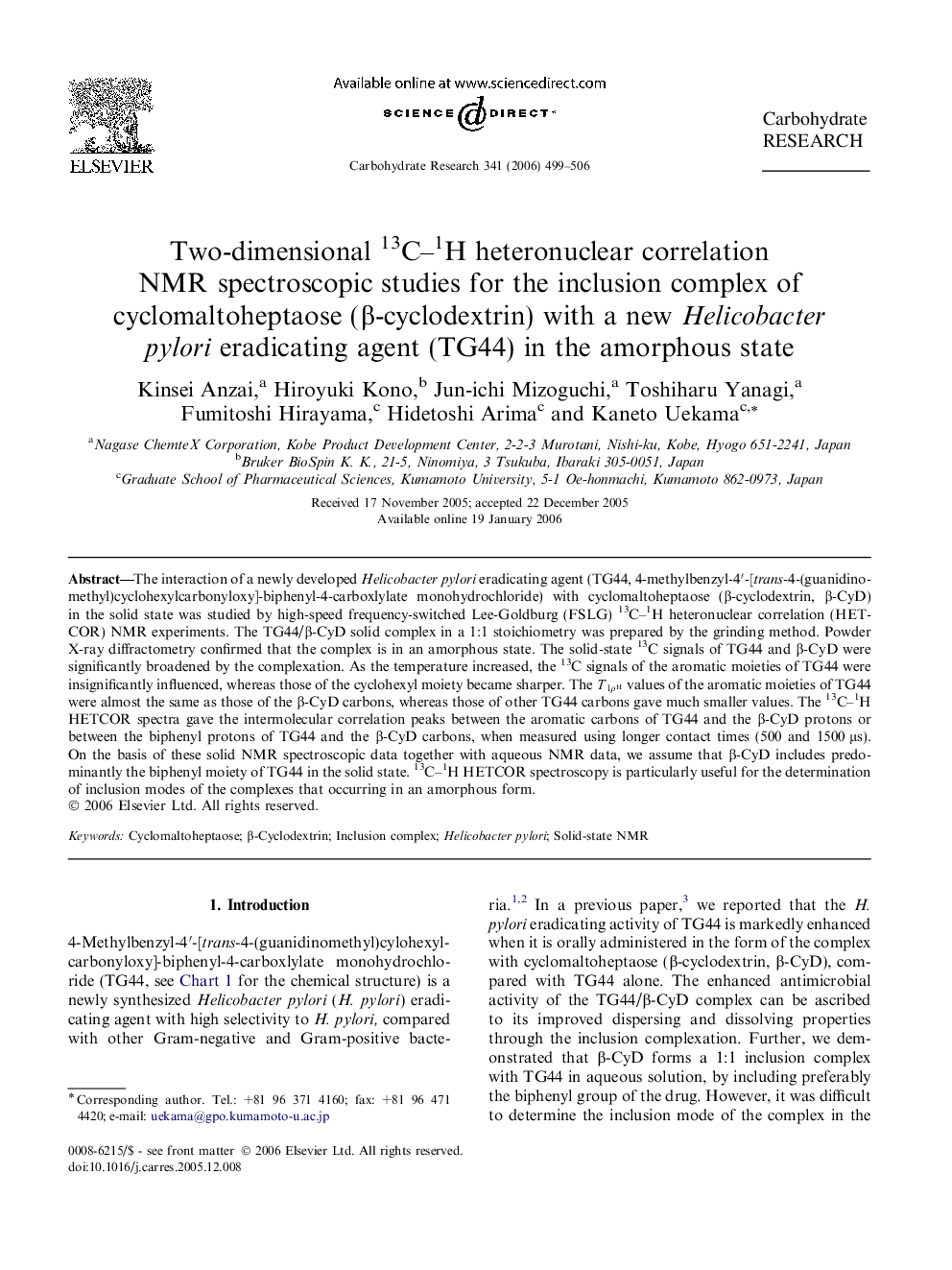| Article ID | Journal | Published Year | Pages | File Type |
|---|---|---|---|---|
| 1389535 | Carbohydrate Research | 2006 | 8 Pages |
The interaction of a newly developed Helicobacter pylori eradicating agent (TG44, 4-methylbenzyl-4′-[trans-4-(guanidinomethyl)cyclohexylcarbonyloxy]-biphenyl-4-carboxlylate monohydrochloride) with cyclomaltoheptaose (β-cyclodextrin, β-CyD) in the solid state was studied by high-speed frequency-switched Lee-Goldburg (FSLG) 13C–1H heteronuclear correlation (HETCOR) NMR experiments. The TG44/β-CyD solid complex in a 1:1 stoichiometry was prepared by the grinding method. Powder X-ray diffractometry confirmed that the complex is in an amorphous state. The solid-state 13C signals of TG44 and β-CyD were significantly broadened by the complexation. As the temperature increased, the 13C signals of the aromatic moieties of TG44 were insignificantly influenced, whereas those of the cyclohexyl moiety became sharper. The T1ρHT1ρH values of the aromatic moieties of TG44 were almost the same as those of the β-CyD carbons, whereas those of other TG44 carbons gave much smaller values. The 13C–1H HETCOR spectra gave the intermolecular correlation peaks between the aromatic carbons of TG44 and the β-CyD protons or between the biphenyl protons of TG44 and the β-CyD carbons, when measured using longer contact times (500 and 1500 μs). On the basis of these solid NMR spectroscopic data together with aqueous NMR data, we assume that β-CyD includes predominantly the biphenyl moiety of TG44 in the solid state. 13C–1H HETCOR spectroscopy is particularly useful for the determination of inclusion modes of the complexes that occurring in an amorphous form.
Graphical abstractFigure optionsDownload full-size imageDownload as PowerPoint slide
